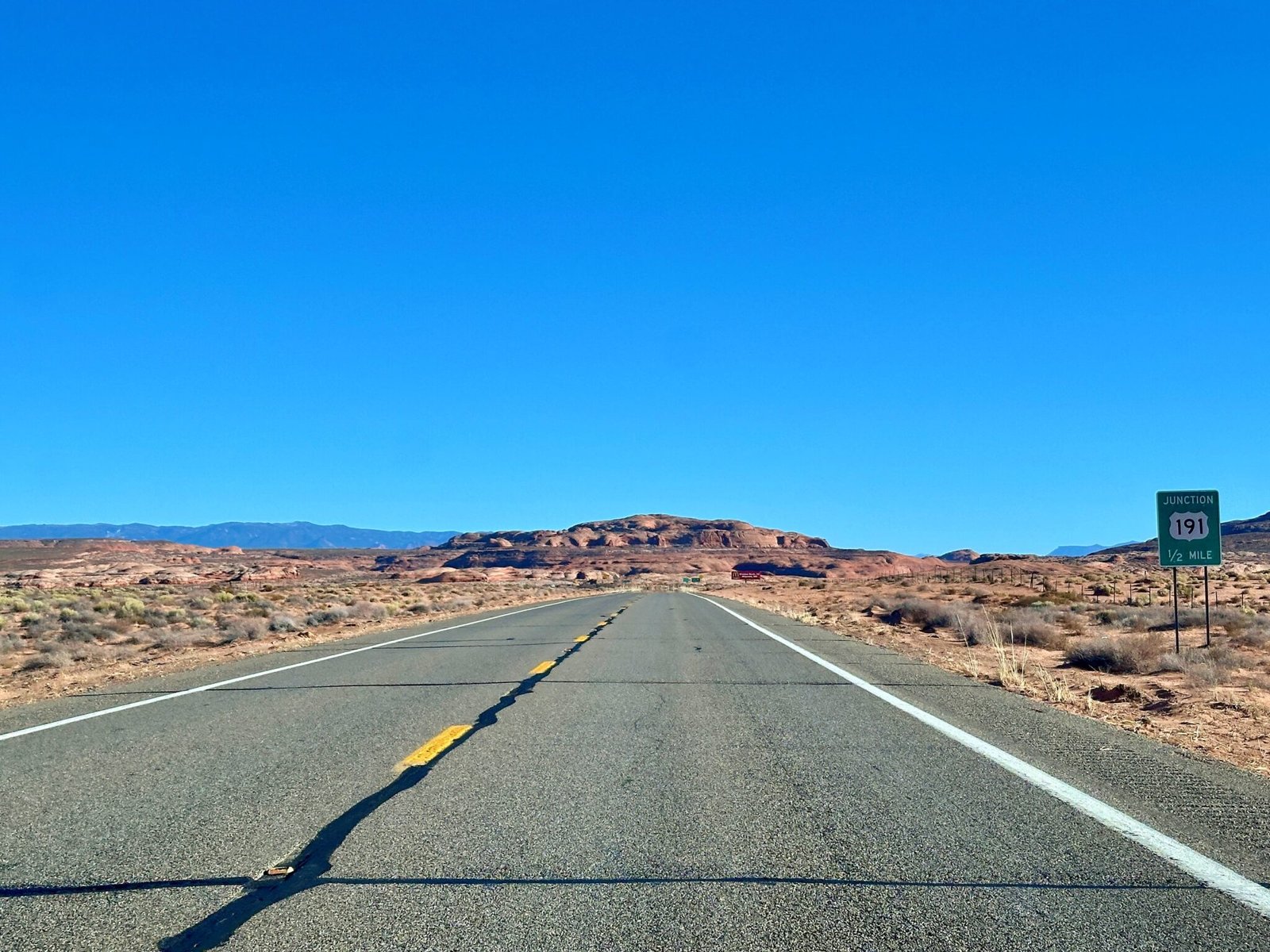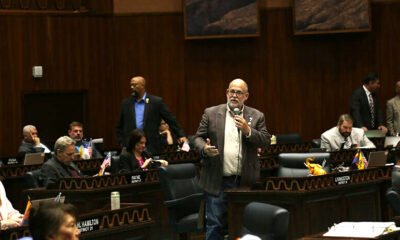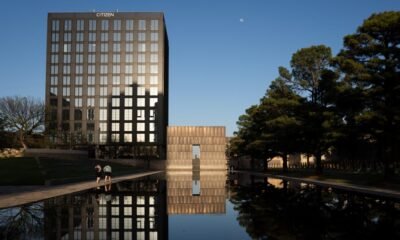Business
Uranium Trucks Set to Hit ‘Killer 89,’ Sparking Fear Among Tribal Communities

Red mesas on the Navajo Nation can be seen in Mexican Hat, Arizona, traveling near the intersection of State Route 89 and 191 along the uranium haul route. Photo by Shondiin Silversmith | Arizona Mirror
Traffic along Highway 89 through Cameron, Arizona, is a key concern for many in the community as heavy vehicles navigate this route to reach popular destinations like the Grand Canyon. The transition from a four-lane highway to a narrower, bumpy two-lane road brings frequent accidents, leading locals to dub this stretch “Killer 89.”
“It’s definitely unsettling and alarming,” said Candis Yazzie, the former vice president of the Cameron Chapter House, regarding the newly permitted uranium hauls that include up to ten truckloads a day through her community.
The uranium haul route spans approximately 320 miles, crossing several communities within the Navajo Nation before ultimately reaching the White Mesa Mill in Utah. Hazards along this route include narrow lanes and poor visibility, compounded by unpredictable weather and wandering livestock.
Cameron has roadside vendors catering to tourists and locals alike; however, residents were unaware of uranium transport operations until they had already commenced. Energy Fuels, Inc. plans to utilize 24-ton haul trucks for ore transport from the Pinyon Plain Mine near the Grand Canyon.
Pending negotiations between the Navajo Nation and Energy Fuels have temporarily halted uranium transport following an unannounced haul in July. The Navajo Nation swiftly implemented emergency measures prohibiting any further transportation of uranium across their lands.
Citing a troubled history with uranium mining, many community members express deep concerns regarding safety and potential contamination. “They’re ignoring that aspect of it, and they’re choosing to profit,” Yazzie stated.
A recent analysis by the Grand Canyon Trust highlights that segments of the uranium truck route pose significantly higher accident risks. Even when accounting for traffic volume, certain stretches displayed up to 700% more danger compared to the national average for road safety.
The research, leveraging accident data from 2014 to 2022, corroborates the lived experiences of residents, who have long understood the dangers of their roads. A recent report noted a fatal collision on State Route 89, a reminder of the risks faced.
With five particularly dangerous segments identified, the analysis underscores the inherent risks of transporting uranium along this route. Figures paint a stark picture: a fatal accident rate significantly higher than national averages, emphasizing the unsuitability of the roads for such hazardous material transport.
The Pinyon Plain Mine’s Transportation Policy mandates trailers remain closed during transport, minimizing the chance of radioactive leakage. However, community anxiety remains palpable as negotiations with Energy Fuels unfold amid calls for a renewed environmental impact study on the mine.
Arizona Governor Katie Hobbs has engaged in discussions with various stakeholders, including the Havasupai Tribe, to advocate for rigorous reviews of the mining operations and their potential impacts on tribal lands and water supplies. “Members of these communities continue to endure significant, heart-breaking harm from uranium mining in our recent past,” Hobbs stated.
As the conversation around uranium transport and its implications persists, community members remain vigilant and concerned about the future of their safety, heritage, and environment.


















